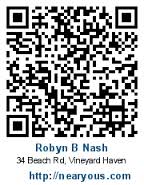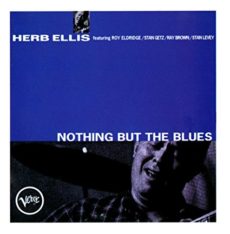
Daily Dose Of Jazz..
Herb Ellis was born Mitchell Herbert Ellis in Farmersville, Texas on August 4, 1921 and raised in the suburbs of Dallas, Texas. He first heard the electric guitar performed by George Barnes on a radio program which inspired him to take up the guitar. He became proficient on the instrument by the time he entered North Texas State University, majored in music, but with no guitar program he studied string bass. With a lack of funds he dropped out in 1941 and toured for six months with a band from the University of Kansas.
In 1943, he joined Glen Gray and the Casa Loma Orchestra and it was here that he got his first recognition in the jazz magazines. Leaving Gray for the Jimmy Dorsey band, he got his initial opportunities to recorded solos. Ellis remained with Dorsey through 1947, traveling and recording extensively, but with a six-week hole in the schedule, he John Frigo and Lou Carter took a gig in Buffalo that lasted six months and where the group Soft Winds was born he wrote the classic jazz standard Detour Ahead.
The group fashioned themselves after the Nat King Cole Trio. and stayed together until 1952. Herb then replaced Barney Kessel in the Oscar Peterson Trio in 1953. His prominence not only with his performing with the trio alongside Ray Brown until 1958 but also because he was the only white person in the group in a time when racism was still very much widespread.
With the addition of a drummer, the Oscar Peterson Trio, served as the house rhythm section for Norman Granz’s Verve Records. They supported the likes of Ben Webster, Stan Getz, Dizzy Gillespie, Roy Eldridge, Sweets Edison, Buddy Rich, Lester Young, Benny Carter, Victor Feldman, Mel Brown, Ella Fitzgerald and Louis Armstrong among numerous others.
The trio were a mainstay of Jazz at the Philharmonic concerts as they swept the jazz world, from 957 to 1960 Ellis toured with Ella Fitzgerald, and along with fellow jazz guitarists Barney Kessel, Charlie Byrd and Tal Farlow, he created another ensemble, the Great Guitars.
In 1994 he was inducted into the Arkansas Jazz Hall of Fame, received an Honorary Doctorate from the University of North Texas College of Music. Guitarist Herb Ellis, released twenty-two albums as a leader before passing away from Alzheimer’s disease at his Los Angeles home on the morning of March 28, 2010, at the age of 88.
www.whatissuitetabu.com
![]()
#preserving genius
More Posts: guitar
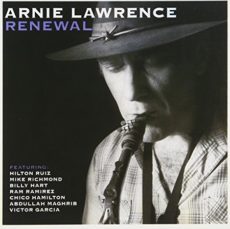
Daily Dose Of Jazz…
Arnie Lawrence ,was born Arnold Lawrence Finkelstein on July 10, 1938 in Brooklyn, New York. He studied clarinet in his youth before switching to saxophone and from the age of 12 he was playing in clubs in the Catskills, and by age 17 was performing at Birdland, at one point working a double bill with John Coltrane.
He played with Charles Mingus, Thad Jones, Maynard Ferguson, Clark Terry and Duke Pearson but did not make his first recordings until 1966, playing on Chico Hamilton’s The Dealer. Working for several years with Hamilton and becoming a soloist on The Tonight Show from 1967 to 1972, Arnie made his first records as a leader in 1968.
In the early 1970s Lawrence played with Willie Bobo, then joined Blood, Sweat & Tears in 1974. He did a world tour with Liza Minnelli in 1978–79, and released a few more records under his own name before touring with Louie Bellson and Elvin Jones in the early 1980s. He composed a symphony he titled Red, White and Blues, which was premiered by an orchestra in Williamsburg, Virginia. It featured himself, Dizzy Gillespie and Julius Hemphill all soloing in the performance.
Putting on his educator hat he taught from the middle of the 1970s, working as an artist in residence in Kentucky and Kansas. By 1986 he had stopped recording and touring and founded the New School for Jazz and Contemporary Music in New York City. Among the program’s students were Roy Hargrove, Brad Mehldau, Larry Goldings, John Popper, Peter Bernstein and Spike Wilner of Smalls Jazz Club. Moving to Israel in 1997, where he founded the International Center for Creative Music, an education facility open to both Jewish and Arab students. He played regularly in Israel and owned his own nightclub called Arnie’s Jazz Underground.
Suffered from lung and liver cancer late in life, alto saxophonist Arnie Lawrence passed away on April 22, 2005, in Jerusalem, Israel and Palestine, as both claim the city as their capital.
Sponsored By
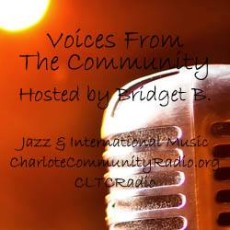
Voices From The Community
![]()
#preserving genius
More Posts: saxophone
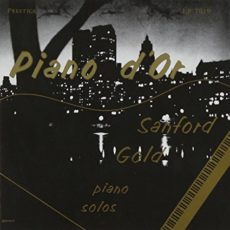
Daily Dose Of jazz…
Sanford Gold was born in Cleveland, Ohio on June 9, 1911. He played locally in Cleveland and led regional bands before moving to New York City in the 1930s. It was in New York that he collaborated with Babe Russin and Raymond Scott in 1935.
Forming a trio with Dave Barbour in 1941 by 1942 Gold was working as a studio musician for CBS before serving in World War II from 1942 to 1946. After his discharged from the military, he worked with Don Byas, Mary Osborne and others before he going to work for NBC from 1949-1954. Gold recorded an album as a leader titled Piano d’Or on the Prestige label in 1955. He also performed as a sideman with Johnny Smith, Al Cohn, Vic Dickenson, Stan Getz, Coleman Hawkins and Sally Blair.
As an educator Sanford was considered one of the premier jazz piano teachers of his time. His self-published book, A Modern Approach to Keyboard Harmony and Piano Techniques, distills the complexities of jazz and classical harmony down to a simple yet far-reaching system of pianistic and harmonic exercises. It has become an underground classic for serious students of the instrument.
Pianist Sanford Gold, whose one of his biggest fans was Bill Evans and who often steered students his way, passed away on May 29, 1984 in Danvers. Massachusetts.
#preserving genius
More Posts: piano
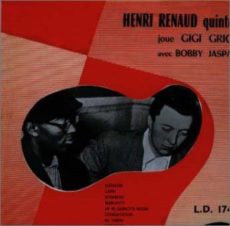
Daily Dose Of Jazz…
Henri Renaud was born April 20, 1925 in Villedieu-sur-Indre, France. His styles was evolutionary over the decades he was musically active and represented the swing, bebop and cool styles. His international renown came when he served as an ensemble-organizing point-man for visiting jazz performers from the United States.
Moving to Paris in 1946, Renaud established a career as a jazz pianist and joined tenor-saxophonist Jean-Claude Fohrenbach’s combo. During 1949 and 1950 he accompanied Don Byas, James Moody and Roy Eldridge. In 1952 he performed at various times with Lester Young, Sarah Vaughan and Clifford Brown.
Henri would go on to record several times with Brown as well as with Milt Jackson, J. J. Johnson, Al Cohn, Oscar Pettiford, Max Roach, Frank Foster and Bob Brookmeyer. In 1954, he visited the United States and recorded during that time.
He became an executive for French CBS’ jazz division in 1964 and for the most part stopped performing, though he occasionally worked as a film composer. Pianist Henri Renaud passed away in Paris, France on October 17, 2002.
Sponsored By
![]()
#preserving genius
More Posts: piano
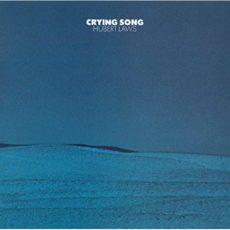
Daily Dose Of Jazz…
Hubert Laws was born November 10, 1939 in the Studewood section of Houston, Texas, the second of eight children. He grew up across the street from a honky-tonk called Miss Mary’s Place where his grandfather played harmonica and his mother, a pianist, played gospel music. He began playing flute in high school after volunteering to substitute for the school orchestra’s regular flutist. Becoming adept at jazz improvisation he played in the Houston-area jazz group the Swingsters, which eventually evolved into the Modern Jazz Sextet, the Night Hawks, and The Crusaders. At age 15, he was a member of the early Jazz Crusaders while in Texas from 1954–60. Multi-talented, he also played classical music during those years.
A scholarship to Juilliard School of Music in 1960 saw him studying music in the classroom and with master flutist Julius Baker. Laws went on to play with both the New York Metropolitan Opera Orchestra (member) and the New York Philharmonic Orchestra during the years 1969–72. In 971 he recorded renditions of classical compositions by Fauré, Stravinsky, Debussy, and Bach on the CTI album Rite of Spring with strings and enlisted the talents of Airto Moreira, Jack DeJohnette, Bob James, and Ron Carter.
During his years at Juilliard he played flute with Mongo Santamaría and began recording as a bandleader for Atlantic in 1964, releasing the albums The Laws of Jazz, Flute By-Laws, and Laws Cause. He has worked with In the Seventies he can also be heard playing tenor saxophone on some recordings.
The 1980’s saw the minor hit Family on CBS Records getting played on many UK soul radio stations. In the 1990s Hubert resumed his career, recording with opera singers Kathleen Battle and Jessye Norman. His albums on the Music Masters Jazz label—My Time Will Come in 1990 and Storm Then Calm in 1994 show a return to his old form of his early 1970s albums.
Over the course of his career he also recorded with Herbie Hancock, McCoy Tyner, Nancy Wilson, Quincy Jones, Paul McCartney, Paul Simon, Aretha Franklin, Ella Fitzgerald, Sarah Vaughan, Lena Horne, Leonard Bernstein, James Moody, Jaco Pastorius, Sérgio Mendes, Bob James, Carly Simon, George Benson, Clark Terry, Stevie Wonder, J. J. Johnson, The Rascals, Morcheeba Ashford & Simpson, Chet Baker, George Benson, Moondog, his brother Ronnie, Gil Scott-Heron, among others, and was a member of the New York Jazz Quartet. .
Laws has been honored with the Lifetime Achievement Awards from the National Flute Association and the National Endowment for the Arts in the field of jazz, as well as a recipient of the NEA Jazz Masters Award and three Grammy nominations. Flautist and tenor saxophonist Hubert Laws continues to compose, record and perform.




